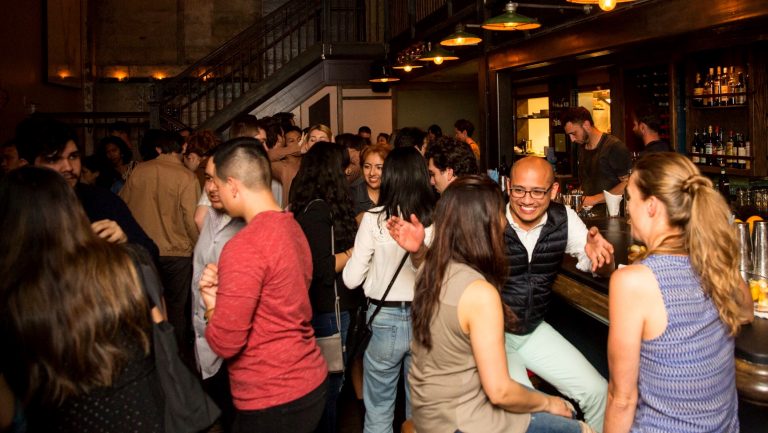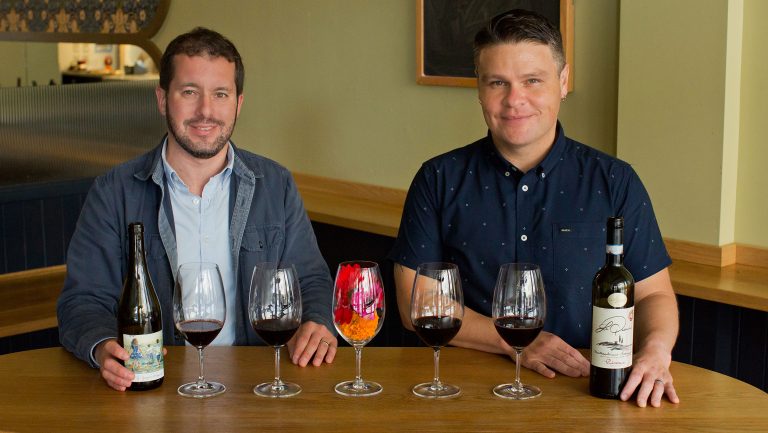On July 1, San Francisco became the first major U.S. city to increase the minimum wage to its highest level yet—$15 an hour, more than twice the average federal rate of $7.25—with plans for adjustments each year according to the consumer price index annual increase. Other cities in California, as well as New York and Washington, D.C., are planning to gradually match that rate.
At first glance, increasing the hourly rate toward an amount that better resembles a living wage sounds like great news—shouldn’t workers be better compensated? They won’t be, though, if businesses slash employees’ hours or implement hiring freezes because they can’t afford the adjustments. San Francisco features some of the highest commercial rents in the nation. For independent restaurants and bars already contending with rising costs for daily operations, the wage increase is forcing operators to get creative with operational adjustments.
“It’s a hard city,” says Kevin Diedrich, the owner of Pacific Cocktail Haven in the Tendernob neighborhood. “Profit margins are so slim.” He says he’s always jumped behind the bar himself for long shifts during the week so he can afford to pay other staff members, but lately he’s had to be even more aware of the bar’s slower hours and its peaks to maximize the schedule. Now shifts are “super lean” during opening hours, with only one bartender until prime time, and with barbacks and other bartenders coming on later. Diedrich admits that if the bar gets busy before backup arrives, someone could be “getting murdered for two and a half hours.”

Don’t miss the latest drinks industry news and insights. Sign up for our award-winning newsletters and get insider intel, resources, and trends delivered to your inbox every week.
H. Joseph Ehrmann, the owner of the Mission District saloon Elixir, estimates that bars are paying about 15 percent more as wage compensation, which is coming from already slim profit margins. Given that, Ehrmann says that it’s more important than ever to pay attention to what people are drinking and recalibrate the bar’s offerings to make sure those products are strongly represented. Elixir is focusing more on its extensive whiskey and rare spirits selections, promoting a weekly whiskey club meeting that gives customers a chance to taste rare bottlings. Regular events encourage people to make return visits to the bar, and Elixir mixes up its programming to include charity programs, industry nights, and a pub quiz.
Similarly, at Pacific Cocktail Haven, Diedrich says one of his biggest concerns is keeping guest expectations high. “It’s a fine line,” he says, “between staying fiscally responsible and ahead of the curve—we have to make our guests’ time worthwhile.” Instead of sacrificing the bar’s reputation for great service and high-quality cocktails, he tries to find more subtle ways to save money. “I’ve been dissecting my P&L,” he says, “finding ways to cut costs here and there without sacrificing the experience of Pacific Cocktail Haven.” His efforts include using fewer trash bags, renting less equipment, and cutting energy consumption. Says Diedrich, “I sometimes feel like a parent telling my staff to turn lights off.”
Josh Harris, the co-owner of Trick Dog in the Mission District, says wage increases are something his company, Bon Vivants, had always forecast into its business plan. Having come up from the service side, he says he experiences an internal battle between his empathy for staffers and the economics of being a bar owner. “I want a team of highly skilled people who love their job and want to make it in San Francisco,” he says. “Good sales means good business.” Because the wage increase was factored in all along, the team benefits and so do visitors to the bar receiving their service.
Another added business expense in San Francisco is the Health Care Mandate, which requires covered employers to provide health coverage for workers putting in more than eight hours a week. One of the ways Bon Vivants maintains a happy bar family is by offering a higher tier of benefits than the minimum requirement for health insurance. The mix of solid bar talent and unique, high-concept theme menus—including the recent Joy of Cocktails, based on the cookbook—consistently attracts crowds. Harris confesses, though, that there are still places where he must cut costs. For instance, he must limit overtime and simply “not be unnecessarily open” during slower hours in the afternoon.
It’s been argued that eliminating tip pools and raising prices are a viable way to bridge the wage compensation gap. Michael Neff, who has owned and managed several bars in New York City and Los Angeles and is now behind The Cottonmouth Club in Houston, strongly disagrees. “There is no way on earth that someone could pay a good server or bartender what they can make under the current [tipping] system, and no way many places could meet margins [while] having to pay an $11 or $15 hourly wage to every person in the joint,” he says. In many instances, prices are raised to reflect higher overhead costs. However if the prices don’t match the level of service, they lose out in return business and can push people to establishments where they feel the expense is more justified. “Places that rely on stellar service to command higher prices won’t have the primary thing they are meant to be offering. Bartenders are both salespeople and producers, so you’re taking a hit to your margin both in what you offer and the way in which you’re offering it.”
The average rent in San Francisco is upwards of $2,500 for a studio apartment, so a person with a minimum wage income has to work significant overtime to afford living there. Nonna Titulauri, a bartender at Hakkasan SF, acknowledges that the increase helps but notes that tips make all the difference in her take-home pay. Servers on a tipping platform have a slight advantage over the average hourly worker. “Fifteen dollars an hour is certainly not enough to get by in the city, with the expense of rent and groceries,” she says, “so it’s a good thing tips are an additional source of income.”
For Diedrich, Ehrmann, and Harris, this new wrench in their operations is causing personal adjustments as well, at least in the short term. While all expressed a desire to have more time away from their respective bars for family and vacations, the challenge of balancing higher wages and slimmer profit margins is putting such plans on hold. However, they also noted that this is the lifestyle they signed up for, in the location they chose to live in. In the end, says Ehrmann, “It becomes another issue of affordability in San Francisco.”

Dispatch
Sign up for our award-winning newsletter
Don’t miss the latest drinks industry news and insights—delivered to your inbox every week.







